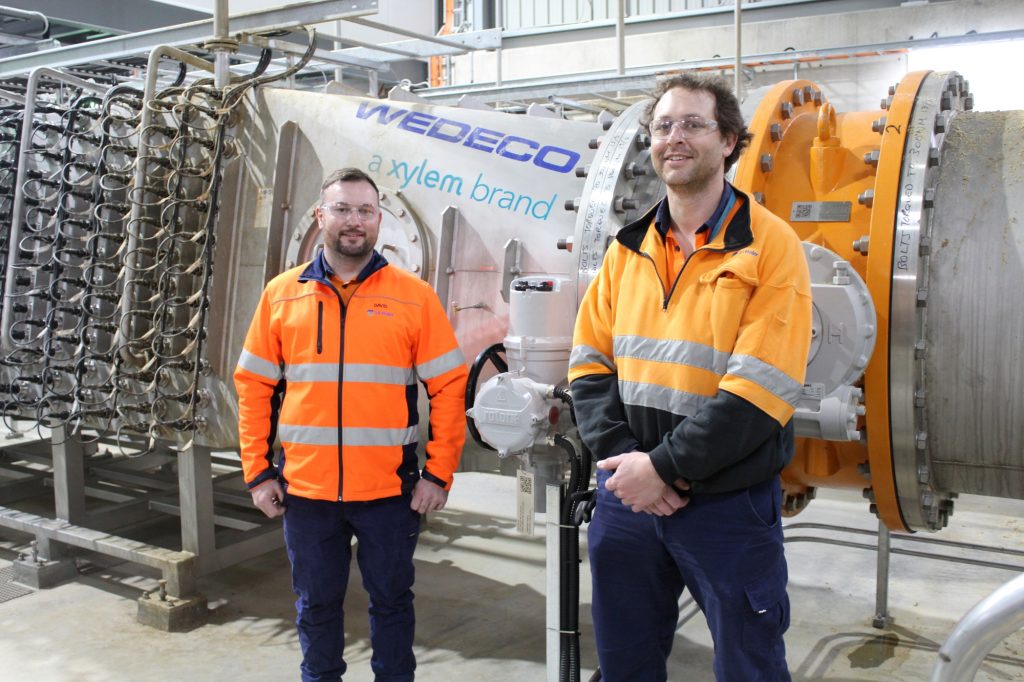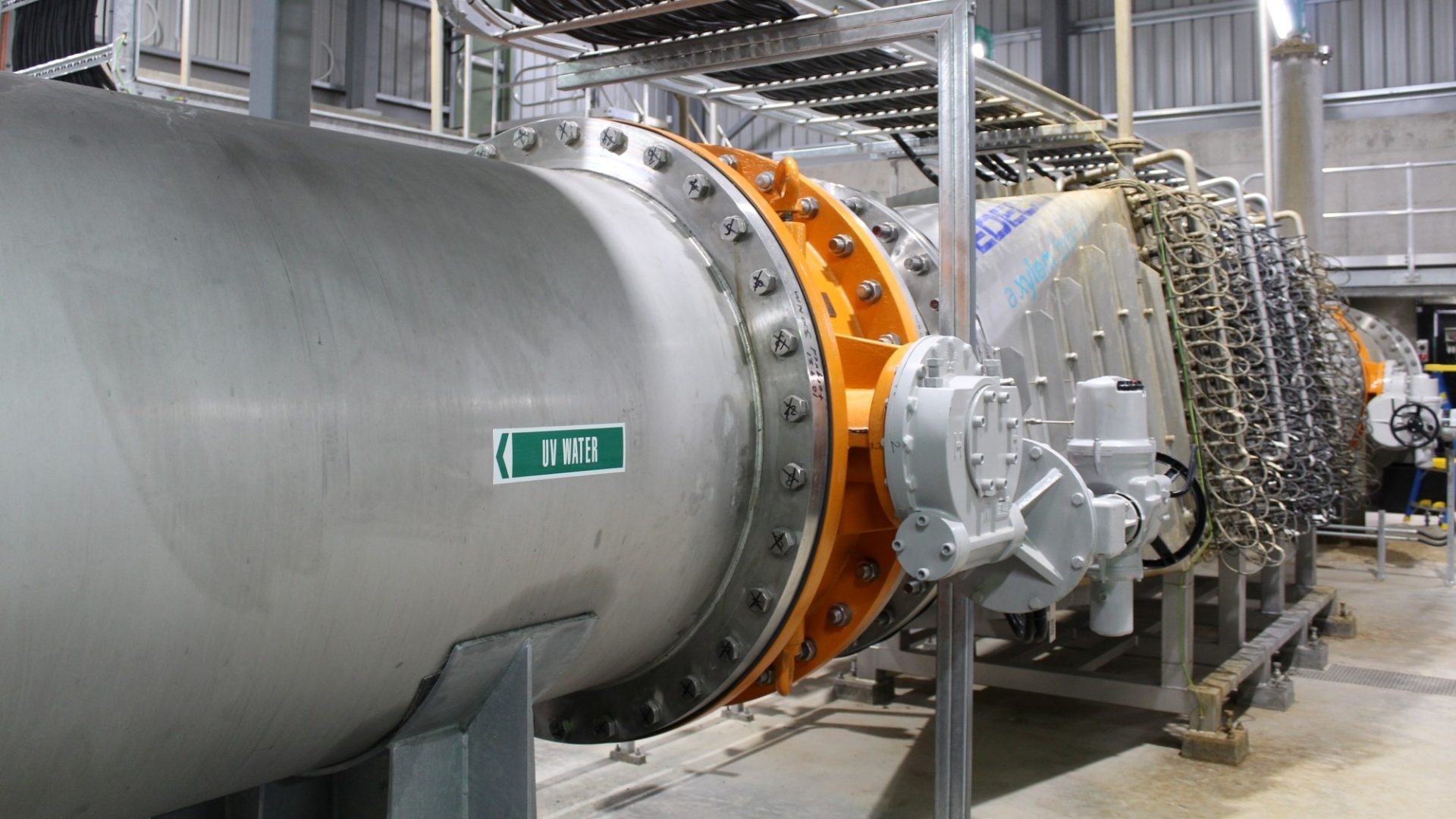After more than six months of successful production, the southern hemisphere’s largest Xylem-manufactured drinking water ultraviolet disinfection system has kept pathogens at bay to protect the supply of safe, clean drinking water for nearly half a million South Australians.
Commissioned in December 2021, the system was retrofitted to SA Water’s Happy Valley Water Treatment Plant as part of a $26 million upgrade to ensure the utility’s continued compliance with Australia’s high drinking water standards, while enabling community access to green open spaces.
Four reactors with a combined 624 ultraviolet (UV) lamps enable the system to treat up to 600 megalitres of water each day instantaneously – designed with additional treatment capacity to maintain network flexibility and support demand changes.
SA Water’s Senior Manager of Capital Delivery Peter Seltsikas said secondary disinfection with ultraviolet light provides an additional layer of water quality protection against potentially harmful pathogens.
“Our new UV disinfection system at Happy Valley is another line of defence protecting the quality and safety of our largest drinking water supply to metropolitan Adelaide, while enabling kayaking and fishing at the adjoining reservoir,” Peter said.
“Pathogens come in a range of forms and can be found naturally in water sources. The catchment area that supplies Happy Valley Reservoir, via Mount Bold Reservoir, is significant and covers the Mount Lofty Ranges.
“From a water quality perspective, this particular catchment is challenging given the presence of agriculture, so there’s an ever-present risk of pathogens, such as cryptosporidium, finding their way into our reservoirs.
“To manage these risks, our Happy Valley Water Treatment Plant adopts a series of conventional treatment processes including coagulation, flocculation and filtration to trap and remove dissolved organic matter or other solid particles.
“Disinfection of the water with chlorine occurs after filtration, to destroy any microorganisms that may not have been captured, however cryptosporidium can be resistant to chlorine and evade treatment.
“When pathogens like cryptosporidium and giardia are exposed to and absorb the high-powered ultraviolet light, it destroys their structures and inactivates the microorganisms’ cellular function.
“Each reactor has 13 independent rows of 12 UV lamps, which are automatically operated and are capable of turning themselves off based on the instantaneous treated flow and incoming water quality.
“The lamps are powered by the latest electronic ballast technology – regulating the lamps’ output from 50 to 100 per cent – and harness a sophisticated UV intensity sensor that significantly reduces energy consumption.
At SA Water they provide their state’s most important and essential service – the delivery of safe, clean water and dependable sewerage services. They are a corporation owned by the people of South Australia and are committed to providing their 1.7 million customers with world class water services that represent excellent value. SA Water invests around $300 million a year in sustaining and enhancing their state-wide network, to ensure it continues to play an integral role in South Australia’s social and economic development.
“These two features make it one of the most energy efficient UV systems, and when combined with our solar array at Happy Valley capable of producing more than 17,000 megawatt hours of energy per year to help power the wider plant, ensures we’re meeting the system’s energy demands and operating it sustainably.”

Mr Seltsikas said the team’s agility and innovation came to the fore amid global shipping delays last year.
“While the impact of last year’s Suez Canal incident sparked delays across the global supply chain, including with our UV system en route inside a shipping container, we initiated swift changes to our project design and condensed the construction schedule to maintain our delivery program,” Peter said.
“Our team reviewed the design of the inlet duct, which required a new weir to be cut into the existing wall, and the initial design included manual concrete demolition and a significant amount of structural steelwork.
“Harnessing creative thinking, we used a robotic cut saw to remove the concrete more efficiently and poured a large concrete beam, eliminating the need to install steel to structurally support the new weir.
“It was imperative we remained on schedule despite the delay in receiving the infrastructure, and these design variations removed six weeks of work from the program to ensure we could complete the project on budget and on time.”



